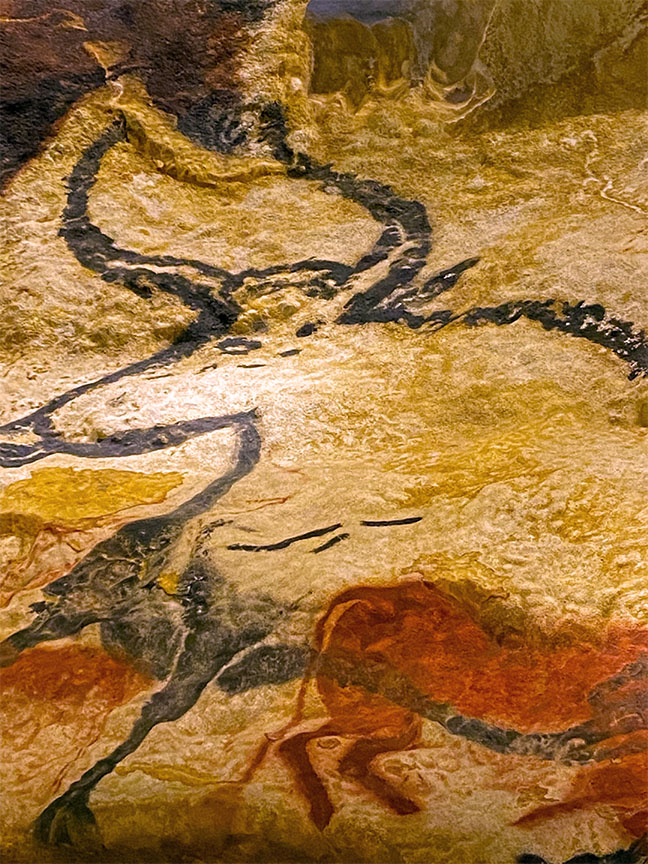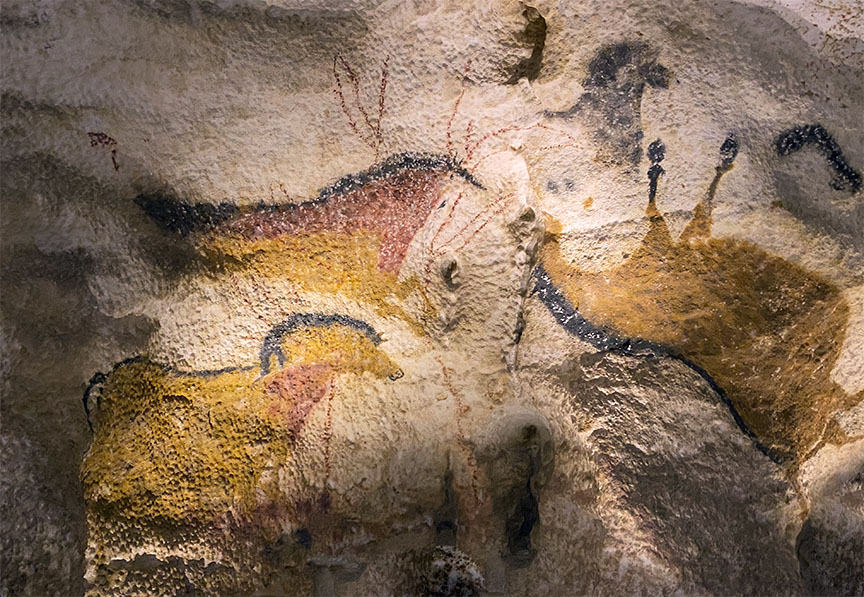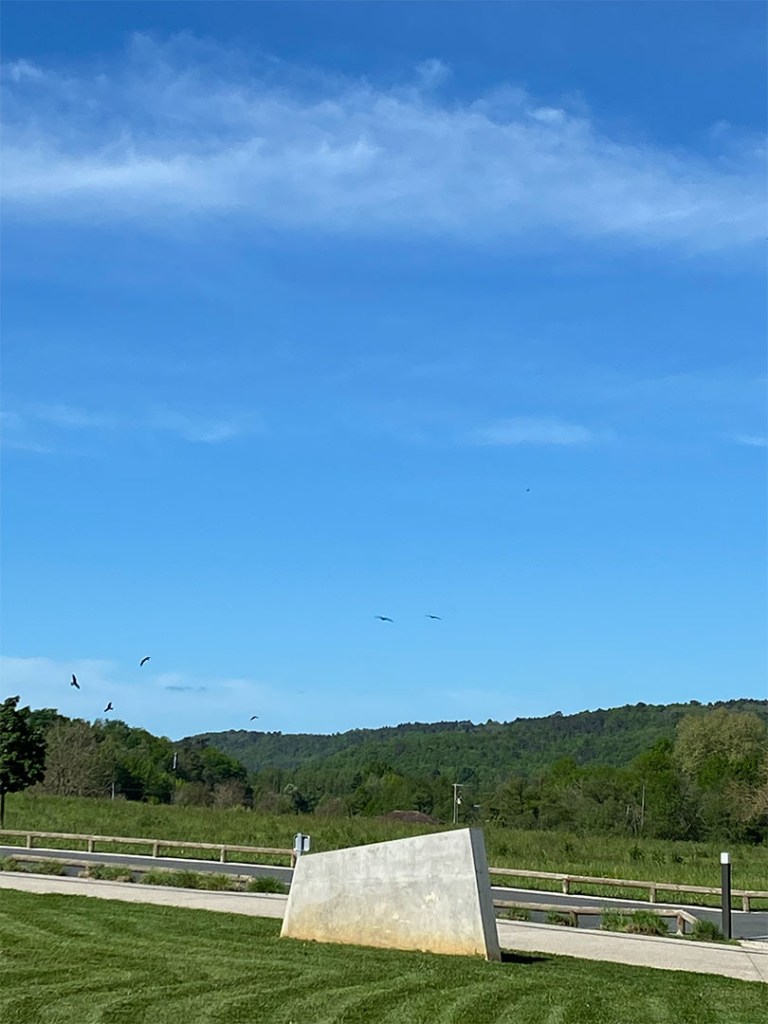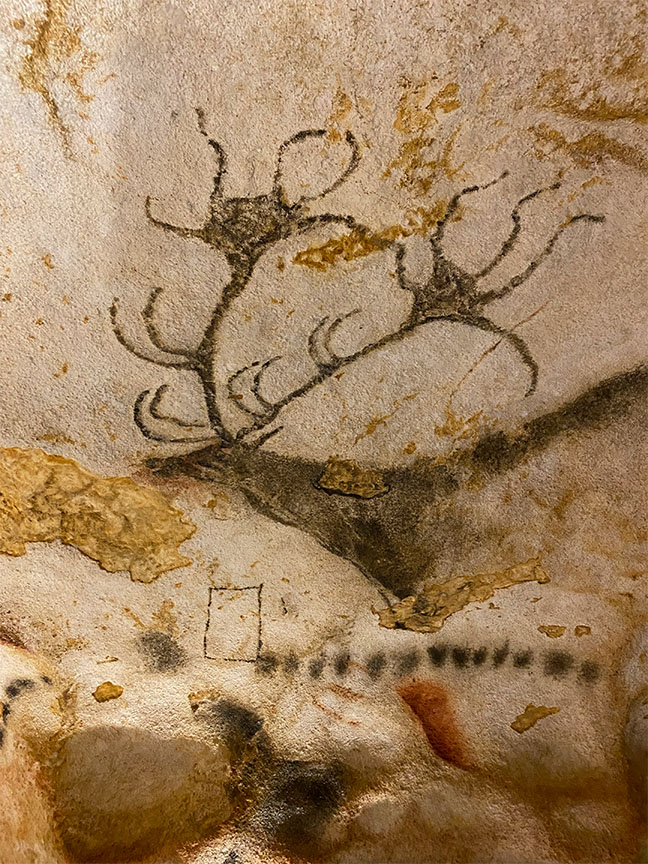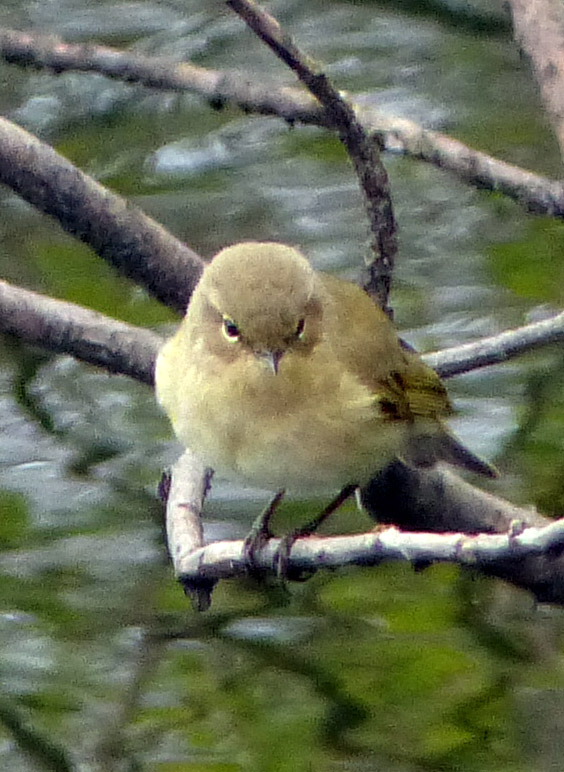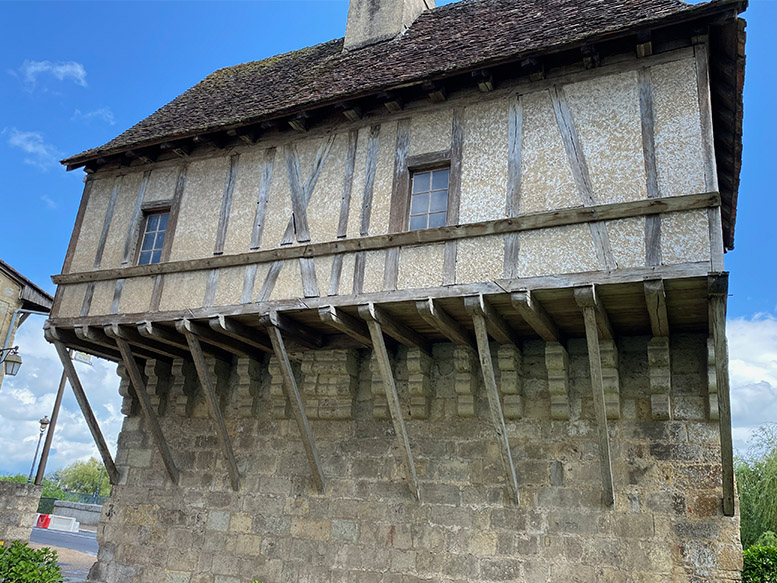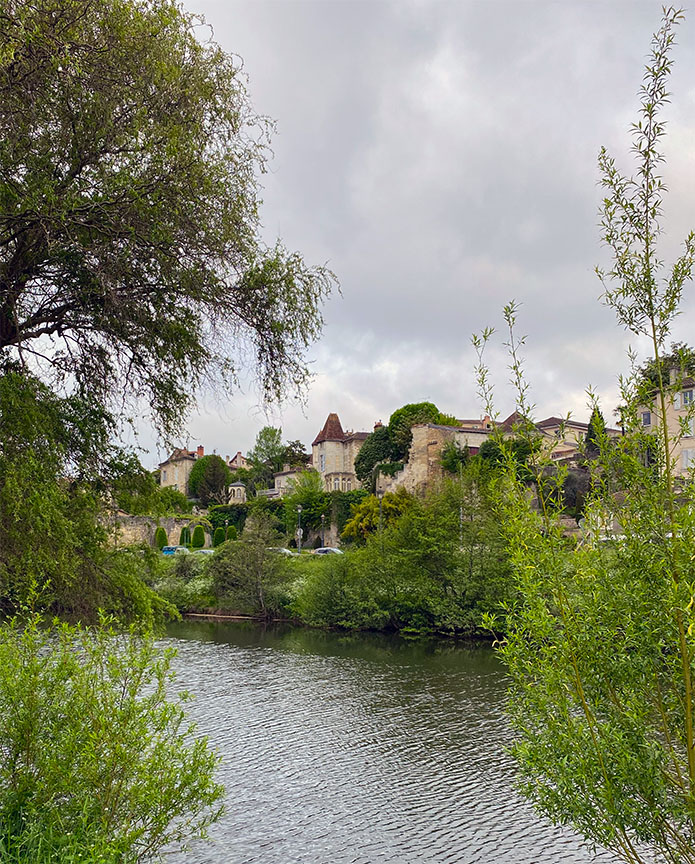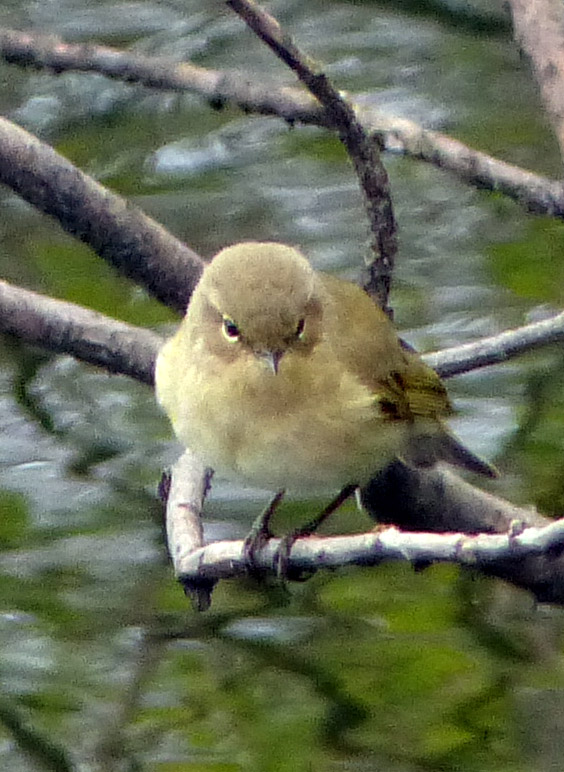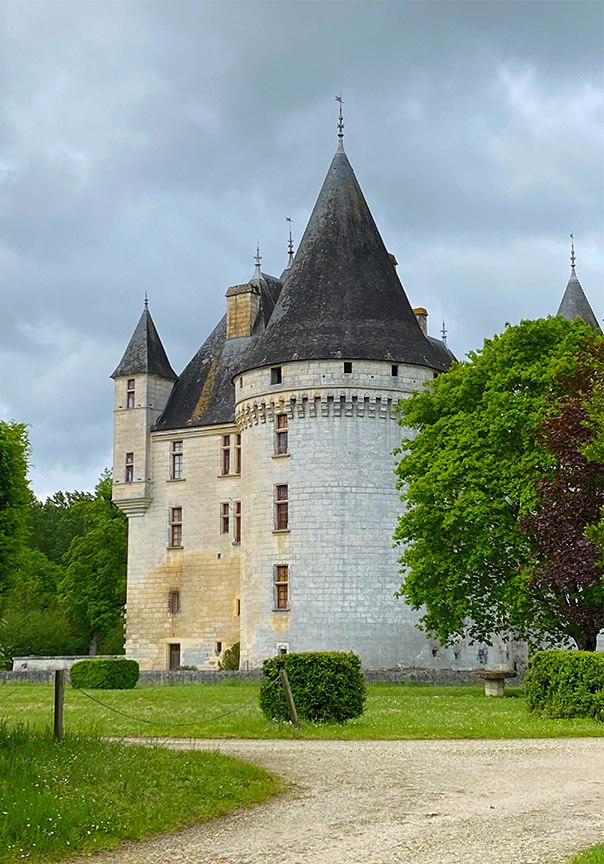
Napoleon’s Death Mask
It’s mid-afternoon. We finally ease into Paris from the périphérique (ease – wrong choice of word).
We feel, if not chipper then somewhat settled, until our GPS instructs us, “to take the eighth exit at the next roundabout.” Eighth! This can only mean the dreaded l’Étoile with the Arc de Triomphe at its centre.
I notice that the GPS has switched to using the same tone as Parisian waiters use when you’ve asked for something unusual, like a seat out of the draft.
l’Étoile! Twelve streets worth of traffic circling the Arc like a great school of rather nasty sharks, each with a different plan. In the midst of the mayhem, dozens of selfie-taking tourists sprint back and forth like unwary bait fish.
When we find street work blocking every access to our destination like Byzantine walls, we almost don’t care. Magically, we seem to have slipped into a Kamikaze-like fatalism. Perfect for navigating Paris.
No point yet in discussing the hotel and underground parking garage here. No point in casting a leaden pall over this whole exposition. But, then, miraculously, we’re 4 levels underground in our stall, and I can turn off the ignition. Neither of us are sure how we got here.

Paris! The Tuileries
A quick feed, a wash and brush-up, and we’re good to go. Art, food, culture, history – Paris has it all. Great perspectives too.
An evening view of the Eiffel tower from the Trocadero – wow! And strolling the banks of the Seine on a warm, spring evening is pretty well as romantic as it gets.
I don’t expect to see many birds (other than Wood Pigeons) in Paris. One has to know a big city very well to find unusual birds. I include Wood Pigeons in this post – this is called Bird Noetz, after all. I spot a few Blackbirds in the Tuileries too.

Wood Pigeons in the Tuileries
Wood Pigeon watching is free in Paris, but almost everything else costs from a lot to plenty. Department stores like Printemps now seem outrageously expensive. Galeries Lafayette, forget about it.
Specialty soap shops such as the one V. discovered, should have armed guards around the merchandise. You can either buy a bar of soap, or dinner – your choice. But,ah, it’s Paris, unlike any other city in the galaxy.
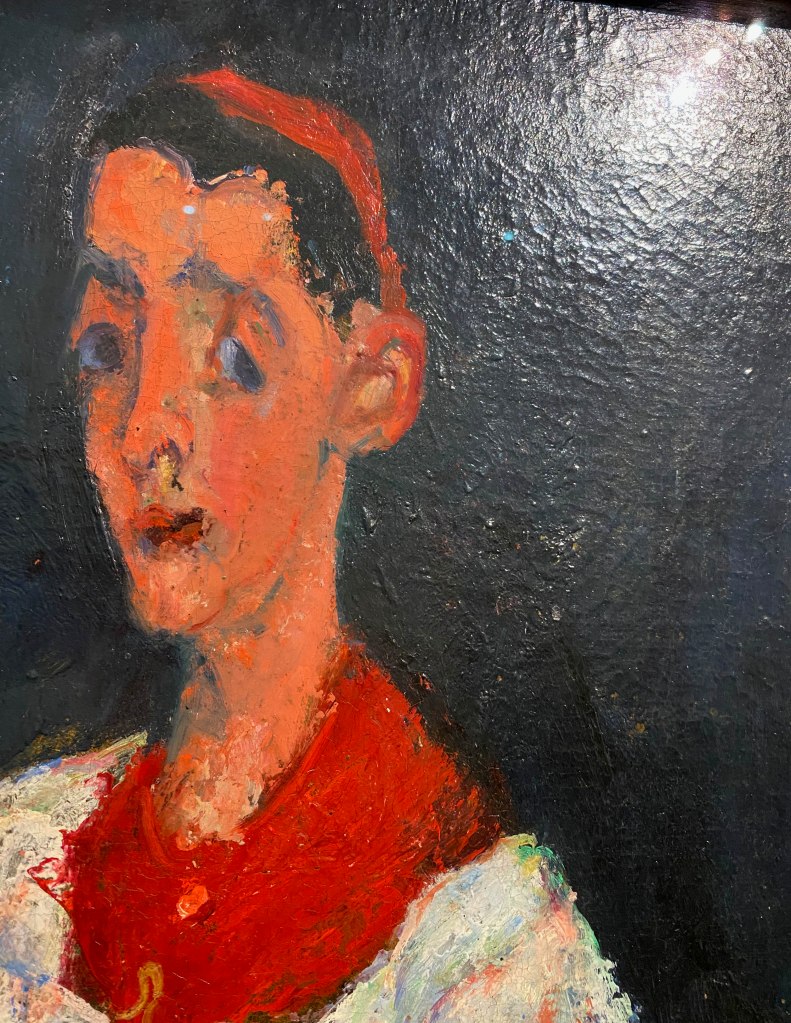
Soutine, I believe
The Orangerie is among the world’s great galleries. It’s filled with modern works, as the brochure says, from “Renoir to Matisse, from Cézanne to Picasso, from Douanier Rousseau to Modigliani and Soutine.” Even so, it’s still manageable. Lots of selfies going on here too. À chacun son goût, I guess.
Monet’s famous Water Lilies is the star attraction, and these giant panels are stupendous works. Luminous. Colour choices and juxtaposition, sensational.
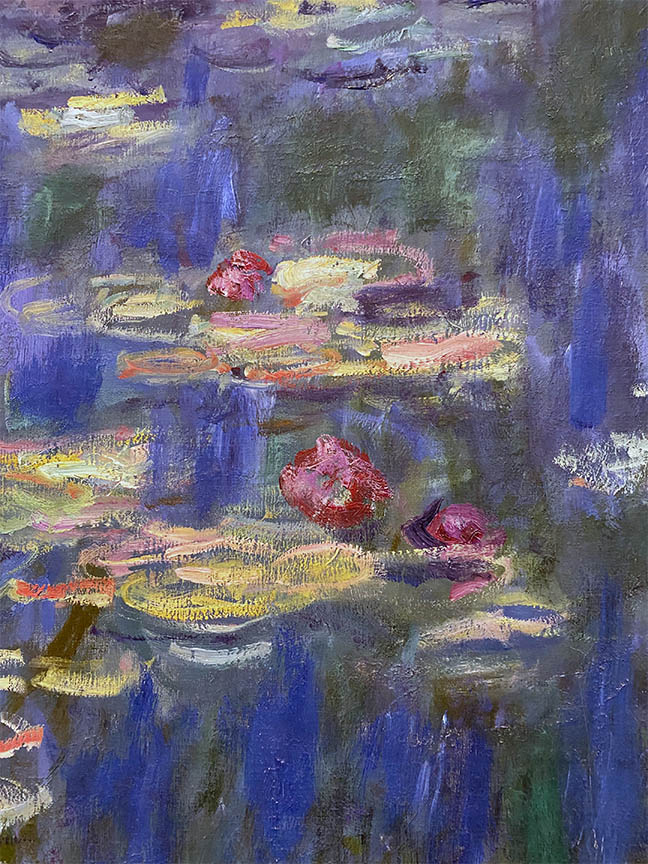
Monet – Waterlilies (detail)
Napoleon. Not everyone is a fan of the Ist Emperor, but he certainly made his mark. Spend any time at all dealing with the niceties of French bureaucracy, and you’ll see what I mean.
I once had to fill out quite a bit of paperwork to get my wallet back after I’d left said wallet on a national park ticket counter for thirty seconds. Even with my picture ID inside, it still took two hours to get the thing back. Being in France, I had the proper documents in order, and stamped, naturally.
Of course, there’s much more to Napoleon and his legacy than unnecessarily inconveniencing me. The Russians and Austrians were very badly inconvenienced by him at the Battle of Austerlitz, for example. The beautiful Alexandre III bridge is just the allies getting back at the Ist emperor.
A fascinating and complex individual, Bonaparte, and the subject of countless studies and books. The city of Paris is a more monument to Baron Haussmann of course, but there is a lot here that is Napoleon too. His tomb in the Invalides is a must for students of history.

Napoleon’s bicorne from Waterloo – Don’t you hate it when your hat gets wet!

Bonaparte’s Sarcophagus
The Cluny
The impressive Cluny museum in the Latin Quarter preserves a bit of medieval Paris. More than a bit, actually. One of the best collections of western European medieval art anywhere is preserved here.
The frigidarium of an Roman bath complex forms the ‘bones’ of the museum. Incidentally, Clunaic style influenced the art and architecture of much of western Europe during this period.
The museum famously houses the Lady and the Unicorn tapestries. A late medieval work loaded with symbolism, this is a testament to the skill of the weavers of Flanders. Perhaps Monet thought about the tapestries when he painted Water Lilies. Ukyio-e prints, sure, but maybe these too.
The unicorn symbolizes purity and religious grace. Only virgins can capture unicorns, by the way. Just so you know.

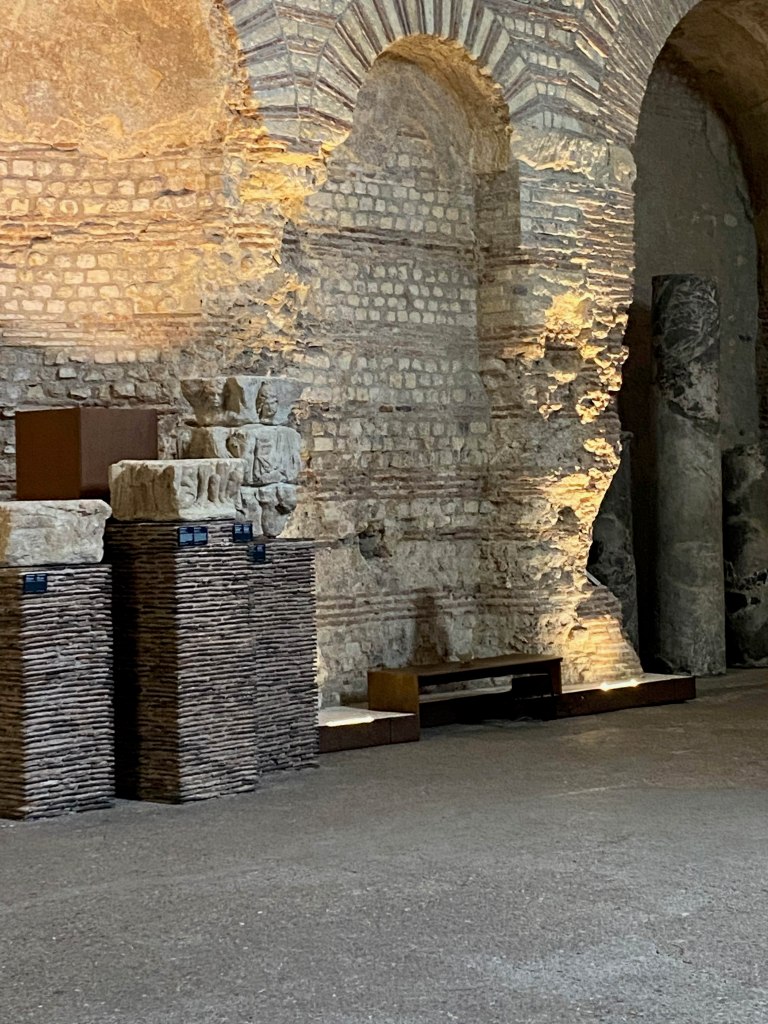
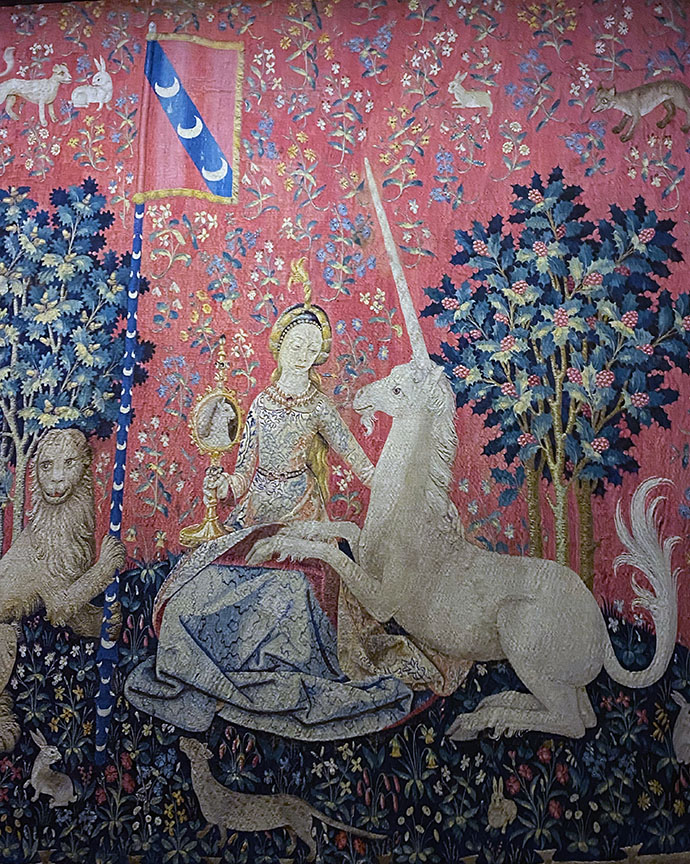
Cluny courtyard, Roman Baths, and the Demoiselle et le Licorne
It’s Paris and, of course, the food is great. The food court at the Bon Marche always lures us in. This time, no exception. Often, we wonder if the visit is an excuse to roam from eatery to eatery.
I hear many that French people lament the fading of some customs such as the 3-hour lunch. Probably it’s more the non-locals, like us, that bolt and run, Parisians seem as meal conscious as ever.
We try to let the French public choose where we eat. If a place is bustling it’s likely good; if it’s as quiet as “an undiscovered tomb” (as Henry Higgins says), it’s almost certainly not.
After a good meal, and a glass or two of decent wine, there’s the evening stroll along the Seine. Nice way to end our visit. Tomorrow, Sancerre.

